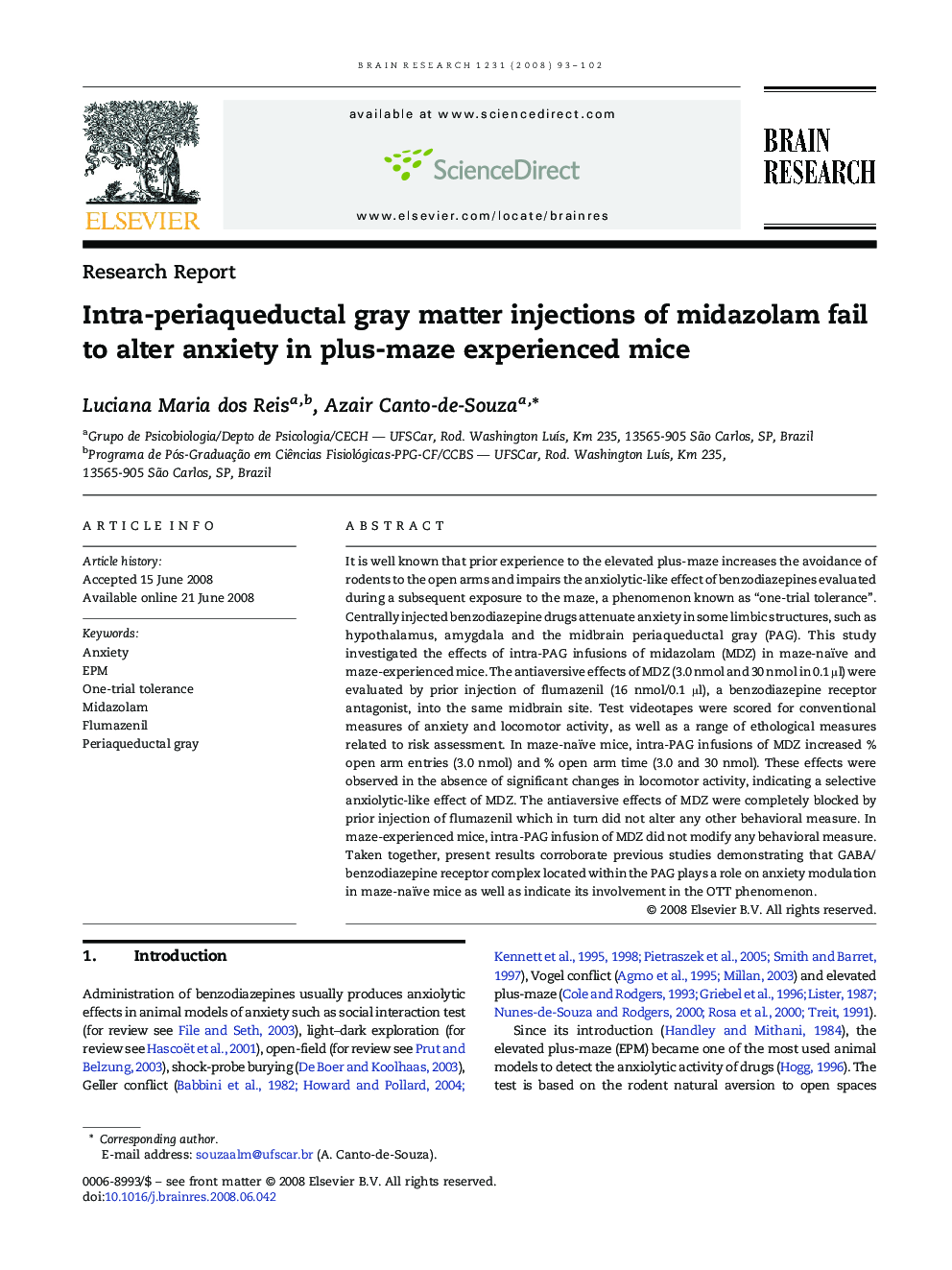| Article ID | Journal | Published Year | Pages | File Type |
|---|---|---|---|---|
| 4329119 | Brain Research | 2008 | 10 Pages |
It is well known that prior experience to the elevated plus-maze increases the avoidance of rodents to the open arms and impairs the anxiolytic-like effect of benzodiazepines evaluated during a subsequent exposure to the maze, a phenomenon known as “one-trial tolerance”. Centrally injected benzodiazepine drugs attenuate anxiety in some limbic structures, such as hypothalamus, amygdala and the midbrain periaqueductal gray (PAG). This study investigated the effects of intra-PAG infusions of midazolam (MDZ) in maze-naïve and maze-experienced mice. The antiaversive effects of MDZ (3.0 nmol and 30 nmol in 0.1 μl) were evaluated by prior injection of flumazenil (16 nmol/0.1 μl), a benzodiazepine receptor antagonist, into the same midbrain site. Test videotapes were scored for conventional measures of anxiety and locomotor activity, as well as a range of ethological measures related to risk assessment. In maze-naïve mice, intra-PAG infusions of MDZ increased % open arm entries (3.0 nmol) and % open arm time (3.0 and 30 nmol). These effects were observed in the absence of significant changes in locomotor activity, indicating a selective anxiolytic-like effect of MDZ. The antiaversive effects of MDZ were completely blocked by prior injection of flumazenil which in turn did not alter any other behavioral measure. In maze-experienced mice, intra-PAG infusion of MDZ did not modify any behavioral measure. Taken together, present results corroborate previous studies demonstrating that GABA/benzodiazepine receptor complex located within the PAG plays a role on anxiety modulation in maze-naïve mice as well as indicate its involvement in the OTT phenomenon.
